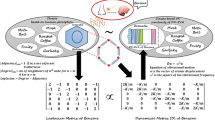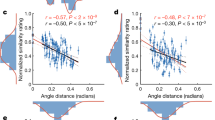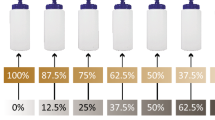Abstract
THREE quite different theories of odour discrimination are in favour at present. The ‘site filling theory’ of Amoore1 relates molecular shapes to odour types and identifies some classifications as primary. The penetration and puncture theory of Davies2 develops a physical model for impulse transmission. The key physical properties involved are the molecular size and the adsorption coefficient between air and a lipid–water interface. Wright3 has correlated vibrational frequencies in the far infrared with the quality of odour.
This is a preview of subscription content, access via your institution
Access options
Subscribe to this journal
Receive 51 print issues and online access
$199.00 per year
only $3.90 per issue
Buy this article
- Purchase on Springer Link
- Instant access to full article PDF
Prices may be subject to local taxes which are calculated during checkout
Similar content being viewed by others
References
Amoore, J. E., Molecular Basis of Odour (Charles C. Thomas Co., Springfield, Illinois (1970).
Davies, J. T., J. theor. Biol., 8, 1 (1965).
Wright, R. H., Nature, 209, 571 (1966).
Kauzmann, W., Kinetic Theory of Gases, 88–90 (Benjamin, New York, 1966).
Laffort, P., and Dravnieks, A., J. theor. Biol., 38, 335 (1973).
Randebrock, R. E., Nature, 219, 503 (1968).
Author information
Authors and Affiliations
Rights and permissions
About this article
Cite this article
MAZZIOTTI, A. Intermolecular basis of odour. Nature 250, 645–646 (1974). https://doi.org/10.1038/250645a0
Received:
Issue Date:
DOI: https://doi.org/10.1038/250645a0
This article is cited by
Comments
By submitting a comment you agree to abide by our Terms and Community Guidelines. If you find something abusive or that does not comply with our terms or guidelines please flag it as inappropriate.



